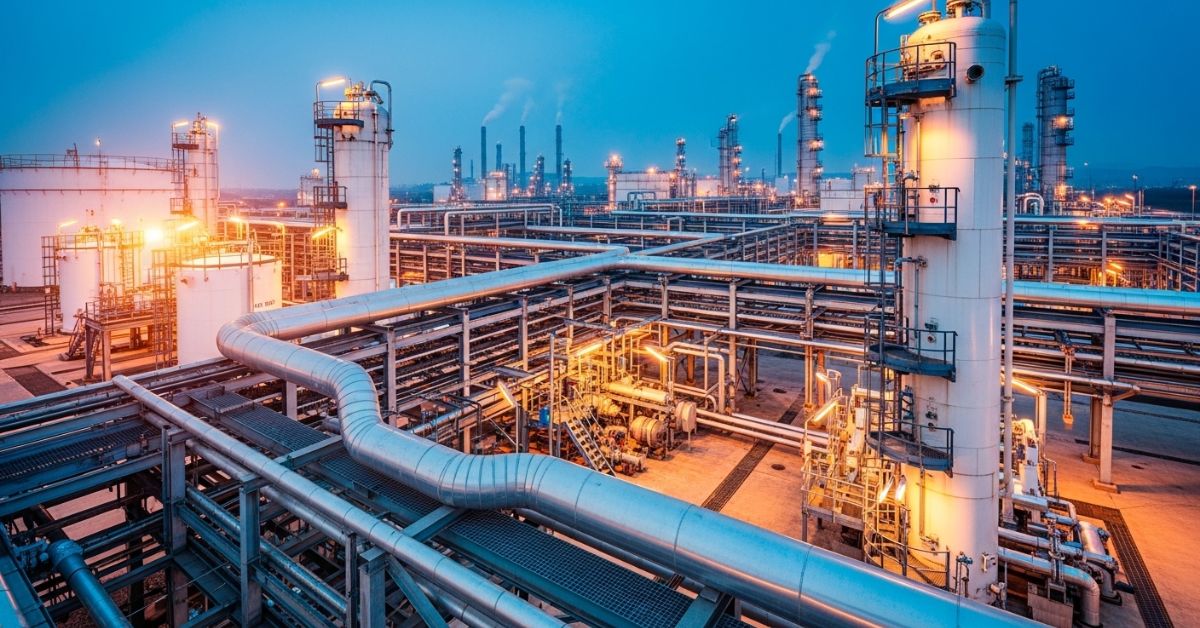HEALTH
Choosing Between Different Yoga Teacher Training Courses in India: A Comparative Guide

Yoga has many diverse and varied yoga teacher training courses for yoga fans worldwide. Becoming a certified yoga teacher is a life-changing experience, but with so many course variations and programs, selecting the best yoga teacher training course for you can seem almost impossible. Whether you are intrigued by the physical postures (asanas), the philosophical wisdom, or the rich spirituality of yoga philosophy and teachings, there is an India course to meet your goals.
In this guide to yoga courses, we will explore the most popular yoga teacher training styles and courses in India while adding enough comparisons for you to make a decision that is right for you personally and regarding your teaching goals.
The Key Styles of Yoga: What to Expect

Regarding yoga instructor training in India, the first (and probably the most important) decision you will face is choosing the type of yoga that resonates with you. The different schools of yoga teach different practices and philosophies; below, we think about the main types of yoga that are commonly taught in India.
- Hatha Yoga
Hatha Yoga is one of the oldest and most practiced types of yoga in the world. The word “hatha” means “force” in Sanskrit and is frequently used to describe the physical aspects of yoga focusing on postures (asanas) and breathing (pranayama). Hatha Yoga Teacher Training (YTTC) is suited for those who want to gain a strong practice in the physical aspect, focusing equally on breathing and meditation.
What to Expect:
- Duration: The YTTC is typically 200 hours long, though a 300-hour or 500-hour program is another possibility.Scope: Offering training in key asanas, pranayama, a few introductions to meditation, and some philosophy is standard.
- Advantages: This is especially good for beginners or anyone interested in developing their understanding of the body-mind relationship.
- Vinyasa Yoga
Vinyasa Yoga is a dynamic and powerful practice that flows with your breath. It is often called “flow” yoga, as it flows you continuously and seamlessly from one asana (posture) to another. Vinyasa Yoga is especially appropriate for yogis who are looking for a strong, athletic practice that includes breath.
What to expect:
Timeframe: While a 200-hour YTTC is common, further advanced options are offered.
Focus: The focus is on moving dynamically through postures to create strength, flexibility, and stamina. Generally, Vinyasa training will be faster-paced than a standard Hatha Yoga practice.
Health Benefits: Vinyasa Yoga is particularly well-suited for increasing cardiovascular health, endurance, and fitness, whilst remaining mindful.
- Ashtanga Yoga
Ashtanga Yoga is a very challenging and intense style of yoga that was designed by Sri K. Pattabhi Jois. In Ashtanga Yoga, a specific series of postures is used. These postures are always practiced in the same order, allowing the practitioner to focus all their energy on the next posture without a lot of other decisions to make.
The goal of Ashtanga Yoga is to build strength, flexibility, and endurance in the body while connecting breath to movement. Ashtanga Yoga is for individuals who prefer to have their yoga practice structured and organized.
What to expect:
What to expect from your Ashtanga Yoga teacher training: Duration: Available as a 200-hour or 300-hour YTTC. Expect: A regular order of postures, controlled breathing, and internal energy (drishti and bandhas) focus.
Expect: To find increased mental control, the development of flexibility and strength, and an improved sense of calm inside with regular practice.
- Iyengar Yoga
Iyengar Yoga is a methodical style of yoga that is alignment-based and uses props (think blocks, straps, and blankets) to attain proper alignment within postures. This is a great style for individuals with injuries, chronic pain or people seeking a class that is at a slower pace where alignment and form are emphasized.
What to expect:
Duration: There are programs available that are 200-hour YTT but also offer more advanced courses for experienced students.
Focus: Emphasizing precision and alignment and the use of props to create the best postures.
Benefits: Good for those interested in a therapeutic style of practice, rehabilitation, or specific instruction around both yoga and physicality.
- Kundalini Yoga
Kundalini Yoga emphasizes tapping into unconscious spiritual energy in the body, called Kundalini, through the use of several postures, breathing, chanting and meditation. It is extraordinarily spiritual and is centered on increasing consciousness and emotional health.
What to Expect:
Duration: Kundalini training programs range in duration from 200 to 500 hours, depending on the program.
Focus: Strong emphasis on energy work, mantra chanting, meditation, and Kundalini energy awakening.
Benefits: Supports emotional healing, mental clarity, and a deep connection to self.
Popular Places to Learn Kundalini: Rishikesh has several schools that teach Kundalini Yoga and infuse learning with aspects of Vedic wisdom.
- Restorative Yoga
Restorative Yoga is a slow and gentle practice that consists of long-held, supported poses to relax and rejuvenate the body. It is perfect for those in search of stress relief, recovery from injury, or who just need a calm practice.
What to Expect:
Duration: Briefer teacher training programs, generally 200 hours, specializing in gentle healing motions.
Focus: Soft stretching, breathing, and the utilization of props to assist the body in maintaining long-held positions.
Benefits: Deep relaxation, stress reduction, and healing for the body and mind.
Popular Locations for Restorative Yoga Teacher Training:
Kerala: Known for its peaceful, healing atmosphere, Kerala is the perfect place for restorative practices.
Additional Considerations for Choosing a Training Program
As you compare various courses of teacher training, it’s not merely what style of yoga you’re going to study but also how the program works, what they teach you, and their certifying credentials. Here are a few more factors to think about when deciding.
- Certification and Accreditation
Ensure that your yoga teacher training course is accredited by a credible organization like Oceanic Yoga, which is known worldwide. Certification through an accredited institution guarantees that you are of international standards and can teach yoga in any part of the world.
- Duration of the Course
Most general teacher training courses take 200 hours, but some institutions provide more intensive or extended programs (300 hours, 500 hours, etc.). The duration will also differ depending on whether you are studying full-time or part-time and whether you study online or face-to-face.
- Environment and Location
India has a variety of locations to complete your yoga teacher training course, including the peaceful mountainside town of Rishikesh, the beaches of Goa by the ocean, or Kerala, known for its Ayurvedic heritage. Where your yoga teacher training takes place may be important to your experience, so consider whether you would prefer a peaceful, quiet retreat or an active, beachside experience.
- Teacher Experience and School Reputation
Investigate the credentials and backgrounds of the teachers. Search for schools with long-established reputations and feedback from previous students. Check schools whose teachers have mature teaching experience under masters who have themselves studied highly reputed masters, or those masters with whom many yoga professionals respectfully correspond.
- Cost and Accessibility
Yoga instructor training in India can also cost a great deal of money. More upscale retreats will also include other facilities like spa massage, private living quarters, and dining, but these are costly. Less expensive programs will tend to be just yoga with little else, but they can provide a more inexpensive alternative.
- Curriculum and Additional Features
Various schools will provide different degrees of depth and concentration on topics such as anatomy, yoga philosophy, teaching methodology, and pranayama. Some schools also add features such as Ayurvedic studies, meditation skills, or sound healing. Ensure that the school is consistent with your own goals and areas of interest.
Conclusion
Deciding on an optimal yoga teacher training program in India is all a matter of what you’re hoping to gain individually. What shape your body and mind are in, and the type of experience you are after. Whether one wants the intensity of an Ashtanga style. The aligning perfection that comes with Iyengar Yoga, or the intense inner awakening available from Kundalini Yoga. Options are everywhere within India.
Finally, the key to making a decision is to listen to your heart. Do serious research, and pick a program that feels true for your own development and teaching goals. India’s beautiful yoga tradition provides the chance to link up with old practices. Deeply engage in the practices of yoga, and graduate as a confident and empathetic yoga teacher.
HEALTH
The Role of Technology in Modernizing Medical Waste Disposal Systems

In the healthcare sector, medical waste disposal is a critical and often overlooked aspect of maintaining hygiene, safety, and environmental sustainability. Traditional methods of disposal, although effective to some extent, are increasingly being replaced by advanced technological solutions that offer greater efficiency, security, and environmental benefits. As the medical industry continues to evolve, the integration of technology in waste management is becoming not just a luxury but a necessity.
Medical waste management involves the safe collection, transportation, and disposal of hazardous waste generated during medical practices. In Canada, medical facilities and waste management companies are now exploring cutting-edge technologies to improve the entire disposal process. This transformation is fueled by the need to address health risks, reduce environmental impact, and comply with stringent regulations. Medical waste disposal solutions have seen remarkable advancements, and understanding the role of technology in this field is essential for ensuring both safety and sustainability.
The Importance of Safe Medical Waste Disposal
Medical waste, ranging from used syringes to contaminated surgical tools, poses a severe health risk if not properly managed. It can cause infections, environmental pollution, and even spread diseases. Improper disposal practices, like landfill dumping or open burning, contribute to these dangers. In this context, the integration of advanced technology helps mitigate these risks by providing safer, more efficient disposal methods.
How Technology is Revolutionising Waste Management
Advancements in medical waste disposal technologies are changing the way healthcare facilities handle and process waste. These technologies not only ensure a safer disposal process but also help reduce costs, improve regulatory compliance, and enhance sustainability. Some of the most significant technological developments in this space include:
1. Automated Waste Segregation Systems
Automating the process of waste segregation is a key improvement in medical waste disposal. In the past, waste segregation was a manual and time-consuming task, but today, technologies like robotic systems and smart sensors can efficiently sort medical waste based on its type, hazard level, and treatment requirement.
2. Sterilisation Technologies
Sterilisation is a critical step in medical waste disposal. Technologies like autoclaving, microwave irradiation, and high-heat incineration are commonly used to sterilize hazardous medical waste. However, newer innovations in sterilization, such as ozone treatment and plasma arc technology, are gaining traction. These methods not only offer more efficient and eco-friendly sterilization but also reduce the need for landfills and incinerators, which are harmful to the environment.
3. Waste-to-Energy Technologies
The concept of converting waste into energy is not new, but its application in medical waste disposal has been a significant advancement. Waste-to-energy technologies such as incineration with energy recovery or anaerobic digestion help convert medical waste into useful by-products like electricity and heat. This reduces the amount of waste sent to landfills and minimizes the environmental impact of disposal, offering a sustainable solution to an ongoing problem.
4. Real-Time Monitoring Systems
One of the most promising advancements in medical waste management is the use of real-time monitoring systems. These systems provide continuous tracking of waste containers and disposal processes using sensors and GPS technology. Real-time data ensures that waste is transported securely and that the entire disposal chain adheres to safety standards. This also helps in regulatory reporting, providing transparency and accountability in waste management practices.
5. Blockchain for Waste Traceability
Blockchain technology is revolutionizing waste management by providing an immutable, transparent record of waste disposal. In medical waste management, blockchain can track the entire lifecycle of medical waste—from generation to disposal. This ensures compliance with regulations, improves data security, and offers a traceable system that can prevent fraud or improper disposal practices.
Environmental Benefits of Modern Waste Disposal Technologies
Modernizing medical waste disposal systems not only enhances safety but also brings significant environmental benefits. Traditional disposal methods like incineration and landfilling contribute to pollution and greenhouse gas emissions. On the other hand, technology-driven solutions are more energy-efficient, reduce harmful emissions, and contribute to environmental conservation. For instance, waste-to-energy systems convert waste into clean energy, which can be used to power hospitals and medical facilities, further reducing carbon footprints.
6. Reducing Carbon Footprint with Smart Technology
By integrating smart technology into waste disposal, healthcare facilities can monitor their waste output, identify areas for improvement, and minimize unnecessary waste production. These solutions not only make waste management more efficient but also reduce the overall environmental impact.
7. Eco-friendly Alternatives to Traditional Disposal
Emerging technologies are providing eco-friendly alternatives to conventional waste disposal methods. Chemical treatments, biodegradable bags, and more efficient recycling processes are being implemented to reduce the environmental burden of medical waste. Additionally, advancements in waste incineration technology ensure that harmful pollutants are not released into the atmosphere.
Ensuring Compliance with Regulations Through Technology
The healthcare sector is heavily regulated, and the importance of compliance in medical waste management cannot be overstated. Governments worldwide have set stringent guidelines for how medical waste should be handled, stored, and disposed of to protect public health and the environment. Technology plays a key role in ensuring that healthcare facilities comply with these regulations.
8. Automated Reporting and Documentation
With the rise of digital technologies, healthcare providers can automate compliance reporting for medical waste disposal. Automated systems collect data about the type, quantity, and treatment of waste, and generate reports for regulatory bodies.
The Future of Medical Waste Disposal
The future of medical waste disposal lies in further innovation and the continued integration of technology. As global waste management needs grow, technology will play an increasingly central role in minimizing the environmental impact and improving the efficiency of disposal processes. Future trends may include the development of fully automated waste disposa’l systems, more advanced waste-to-energy technologies, and the integration of AI and machine learning for predictive waste management.
Moreover, the collaboration between technology providers and healthcare facilities will be crucial for ensuring that new solutions are tailored to meet the specific needs of the medical industry. With this partnership, it is possible to create more robust and sustainable medical waste disposa’l systems that are safe, cost-effective, and environmentally responsible.
Final Thoughts on Advancing Medical Waste Disposal
The integration of technology in medical waste disposa’l systems is an essential step toward creating a safer, more sustainable healthcare environment. By adopting modern solutions like automated segregation systems, advanced sterilization methods, and waste-to-energy technologies, healthcare facilities can reduce their environmental footprint and ensure the safe disposa’l of medical waste. Embracing these technologies not only ensures regulatory compliance but also contributes to a cleaner, safer future for the healthcare industry and the world at large.
HEALTH
Understanding the Chemical Formula for Nitrogen Trifluoride and Its Industrial Relevance

Nitrogen trifluoride, commonly known in the chemical industry as NF₃, is a colorless, non-flammable, and highly reactive gas widely used in electronics, semiconductors, and industrial cleaning applications. As the demand for ultra-pure gases continues to rise in high-tech sectors, nitrogen trifluoride has gained attention as one of the most effective fluorinating agents available.
In this article, we’ll explore the chemical formula for nitrogen trifluoride, its molecular structure, its properties, and the critical role it plays among modern industrial gases.
1. What is the Chemical Formula for Nitrogen Trifluoride?
The chemical formula for nitrogen trifluoride is NF₃. This means the molecule is composed of one nitrogen (N) atom and three fluorine (F) atoms. NF₃ is categorized as an inorganic compound and belongs to the family of nitrogen halides.
NF₃ is structurally similar to ammonia (NH₃), except that fluorine atoms replace the three hydrogen atoms in ammonia. This substitution renders NF₃ significantly more electronegative and reactive than NH₃, particularly under plasma conditions.
2. Molecular Structure of NF₃
The geometry of nitrogen trifluoride is trigonal pyramidal. This shape results from the lone pair of electrons on the nitrogen atom, which causes repulsion and gives the molecule its distinct shape. The strong electronegativity of fluorine contributes to the molecule’s polarity, which plays a key role in its behavior in plasma-enhanced chemical reactions.
Molecular weight of NF₃:
- Nitrogen (N): 14.01 g/mol
- Fluorine (F): 3 × 18.998 g/mol = 56.994 g/mol
- Total Molecular Weight: 004 g/mol
3. Key Physical and Chemical Properties
- Molecular formula: NF₃
- Molar mass: 71.004 g/mol
- Appearance: Colorless gas
- Odor: Slightly musty odor
- Boiling point: -129.1°C
- Melting point: -206.7°C
- Density: 3.003 g/L at 0°C
- Solubility: Slightly soluble in water
Though stable under standard conditions, nitrogen trifluoride decomposes when exposed to high-energy plasma, heat, or electrical discharges. In decomposition, it releases fluorine atoms, which makes it highly effective in cleaning applications.
4. Industrial Uses of Nitrogen Trifluoride
a. Semiconductor Manufacturing
NF₃ is most famous for its application in the electronics industry, particularly in cleaning plasma chambers used in semiconductor fabrication. The decomposition of NF₃ in plasma releases free fluorine radicals that effectively remove unwanted silicon-based residues from process chambers.
b. Flat Panel Display Production
In manufacturing LCDs and OLEDs, NF₃ is used to clean deposition chambers and etch thin-film materials. Its clean and efficient performance makes it a safer and more environmentally friendly alternative to perfluorocarbons (PFCs).
c. Solar Panel Fabrication
NF₃ is utilized in solar cell manufacturing, particularly for chemical vapor deposition (CVD) chamber cleaning. The efficiency of chamber maintenance with NF₃ directly affects the productivity and cost-effectiveness of solar panel production.
d. High-Purity Fluorine Source
In specialized chemical syntheses, NF₃ serves as a precursor or reactant to generate high-purity fluorine in situ, offering safer handling compared to elemental fluorine gas.
5. Environmental and Safety Considerations
While nitrogen trifluoride is chemically stable and non-flammable, it is also recognized as a potent greenhouse gas. Its Global Warming Potential (GWP) over 100 years is approximately 17,000 times that of carbon dioxide. However, due to its efficient decomposition in controlled environments, emissions can be minimized with proper handling.
Safety Protocols:
- Store NF₃ in corrosion-resistant cylinders.
- Avoid contact with high temperatures or open flames.
- Use leak detection and ventilation in storage areas.
- Ensure only trained personnel handle the gas, especially during cylinder transport and disposal.
The use of NF₃ should always be accompanied by robust environmental management strategies to reduce its ecological impact.
6. Comparing NF₃ with Other Industrial Gases
Compared to traditional industrial gases like oxygen (O₂), nitrogen (N₂), or argon (Ar), nitrogen trifluoride is far more reactive and specialized. While O₂ and N₂ are essential for combustion and inerting processes, NF₃ is specifically chosen for its high fluorine content and decomposition efficiency in plasma environments.
NF₃’s role is more critical in precision-driven industries where ultra-clean processes are essential for quality control and yield optimization.
7. Global Demand and Market Trends
As the demand for consumer electronics, solar energy, and semiconductor devices rises, so does the demand for nitrogen trifluoride. Manufacturers are increasingly shifting from older, less efficient fluorine-containing gases to NF₃ for its performance benefits and reduced environmental footprint (when used with abatement systems).
Regions such as East Asia (China, Taiwan, South Korea, and Japan) are leading global consumers of NF₃, thanks to their dominance in electronics and photovoltaic production.
8. Storage and Transport Guidelines
Nitrogen trifluoride is stored and transported in high-pressure gas cylinders made of stainless steel or other compatible materials. Cylinders must be clearly labeled and secured upright to prevent tipping or damage.
Important Tips:
- Follow proper temperature and pressure guidelines.
- Never refill NF₃ cylinders yourself; always use certified refill services.
- Dispose of empty or expired cylinders through authorized hazardous waste handlers.
NF₃ suppliers often include full traceability and certification with each delivery to maintain compliance with international safety standards.
9. Procurement Tips
When sourcing nitrogen trifluoride, it’s essential to choose a supplier who can offer:
- High-purity NF₃ (99.9% or greater)
- Safe and secure packaging
- Real-time inventory tracking
- Regulatory compliance (ISO, REACH, RoHS)
- Technical support for safe application and disposal
Suppliers like JH Gas provide comprehensive support to industries using nitrogen trifluoride in sensitive environments, ensuring a safe, consistent, and quality-controlled supply.
Conclusion
Nitrogen trifluoride (NF₃) is far more than a niche chemical—it’s a vital component in the production of the technologies that power our modern world. With the chemical formula for nitrogen trifluoride being NF₃, the compound offers exceptional performance in cleaning, etching, and fluorination across a broad spectrum of high-tech industries.
Understanding its molecular structure, properties, and environmental impact is key to using it responsibly. As global industries continue to innovate, the role of NF₃ will only grow in significance—especially where cleanroom conditions and chemical precision are critical.
For industries exploring advanced industrial gases, nitrogen trifluoride remains a standout choice for efficiency, purity, and performance.
HEALTH
Natural-Looking Results at Uplifted Medical Aesthetics

When Jennifer first looked in the mirror after her visit to Uplifted Medical Aesthetics, she smiled not because she looked like someone else, but because she looked like the best version of herself. There were no dramatic changes. No signs of overdone enhancements. Just a fresher, smoother, more radiant version of the woman she had always been.
That’s the magic behind natural-looking results. And it’s what makes Uplifted Medical Aesthetics, a trusted med spa in Redondo Beach, a place people return to again and again.
The Art of Looking Refreshed, Not Fake
In the world of aesthetics, there’s a fine line between enhancement and alteration. At Uplifted Medical Aesthetics, the goal is never to change who you are, it’s to restore what time may have softened or taken away. From Botox to lip filler, treatments are done with precision and care to ensure results that look smooth, balanced, and entirely natural.
Every client receives a personalized consultation where their features, skin condition, and goals are evaluated. This allows the experts to tailor services like dermal filler or PDO Threads in Redondo Beach to create subtle improvements that refresh the face without altering its character.
Why Natural Results Matter More Than Ever
Today’s clients want to enhance their appearance without looking “done.” That’s where Uplifted Medical Aesthetics excels. With a commitment to using only the most advanced injectables and skincare solutions, the team delivers soft, beautiful results that never feel artificial.
This emphasis on natural beauty has made Uplifted one of the best med spas in Redondo Beach, trusted by clients of all ages and backgrounds.
A Closer Look at Popular Services
Let’s explore some of the top treatments that help clients achieve that naturally refreshed look.
Botox for Smooth, Soft Expression
Botox remains one of the most effective ways to smooth fine lines, especially around the eyes and forehead. When done correctly, it doesn’t freeze your face, it relaxes muscles just enough to soften expressions while preserving movement. At Uplifted Medical Aesthetics, careful dosing ensures Botox results that enhance without overpowering.
Lip Filler That Looks Like You Were Born With It
One of the top concerns about lip filler is looking overfilled. The specialists at Uplifted understand this. Using small, strategic amounts of dermal filler, they enhance lip shape and fullness in a way that looks effortless and natural. Whether you want a soft boost or subtle symmetry, the focus is always on preserving your unique look.
Dermal Filler to Restore Youthful Volume
As we age, facial volume naturally decreases. This can cause hollows, sagging, and a tired appearance. With expertly placed dermal filler, areas like the cheeks, jawline, and under-eye zones can be gently lifted and restored. The results are smooth and youthful, never puffy or overdone.
PDO Threads for Subtle Lift and Tightening
One of the most advanced treatments offered is PDO Threads in Redondo Beach. These threads are gently placed under the skin to lift and support sagging areas like the jawline or cheeks. The threads dissolve over time but leave behind collagen that keeps the skin firmer and more defined.
Skin Rejuvenation for a Lasting Glow
Beauty isn’t just about structure, it’s about skin quality too. Uplifted Medical Aesthetics offers powerful treatments to improve texture, tone, and clarity, giving clients skin that glows naturally from within.
Microneedling to Trigger Collagen Renewal
Microneedling is a favorite for good reason. This simple treatment creates micro-injuries in the skin that stimulate natural collagen production. The result? Smoother, brighter skin with reduced pores, fine lines, and acne scars. When combined with advanced serums, microneedling delivers long-lasting improvements in skin health.
Sculptra for Natural Volume and Glow
Unlike traditional fillers, Sculptra works by gradually encouraging your body to produce collagen. The results come slowly but that’s part of what makes it so natural-looking. Over weeks and months, the skin becomes firmer and fuller with no sudden or dramatic changes.
Skincare That Supports Long-Term Results
At Uplifted Medical Aesthetics, professional skincare isn’t an afterthought. It’s a core part of every treatment plan. The team helps clients select medical-grade skincare that complements their treatments and protects their results at home.
Why Clients Trust Uplifted Medical Aesthetics
With a calm and private setting located at 830 Torrance Blvd, Redondo Beach CA 90277, this med spa blends luxury with clinical expertise. From the moment you walk in, you’re treated with warmth and respect. The team is led by trained professionals who listen closely and educate clearly.
Clients trust Uplifted not just for the services, but for the personalized care they receive. It’s this commitment to excellence that makes it a leading med spa in Redondo Beach.
For questions or appointments, you can reach the team at +1 310-504-0830. Whether you’re new to injectables or a seasoned skincare client, the staff is always ready to guide your journey.
A Community Built on Confidence
Uplifted Medical Aesthetics continues to grow because of its loyal community. Locals often share their results on platforms like Instagram and Facebook, highlighting the natural, refreshed looks they’ve achieved. Word-of-mouth, glowing reviews, and repeat visits speak volumes about the spa’s reputation as the best med spa in Redondo Beach.
Experience the Difference for Yourself
Looking refreshed, confident, and completely like yourself is possible with the right team by your side. At Uplifted Medical Aesthetics, every treatment is done with care, expertise, and a focus on natural beauty.
If you’re ready to explore options like Botox, PDO Threads in Redondo Beach, microneedling, or customized skincare plans, call +1 310-504-0830 or visit the spa in Redondo Beach.
Are you ready to discover what natural beauty feels like?
-

 TECHNOLOGY2 years ago
TECHNOLOGY2 years agoElevating Game Day Eats: A Guide to Crafting Crowd-Pleasing Sliders
-

 ENTERTAINMENT2 years ago
ENTERTAINMENT2 years agowave_of_happy_: Your Ultimate Guide
-

 FASHION2 years ago
FASHION2 years agoGPMsign Fashion: Redefining Style with Purpose
-

 TECHNOLOGY1 year ago
TECHNOLOGY1 year agoTrader Joe’s Dayforce: Revolutionizing Workforce Management
-

 FOOD2 years ago
FOOD2 years agoAltador Cup Food Court Background: A Culinary Extravaganza Unveiled
-

 SPORTS2 years ago
SPORTS2 years agoScore Chaser Sporting Clays: A Thrilling Pursuit of Precision
-

 HOME IMPROVEMENT1 year ago
HOME IMPROVEMENT1 year agoWhat Kitchen Renovation Companies Offer Beyond Basic Remodeling
-

 NEWS2 years ago
NEWS2 years agoNyl2 Kemono: Unveiling the World
